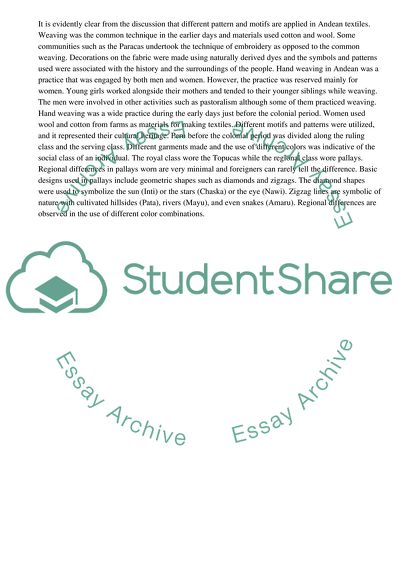Cite this document
(Culture and Andean Textile Research Paper Example | Topics and Well Written Essays - 2500 words, n.d.)
Culture and Andean Textile Research Paper Example | Topics and Well Written Essays - 2500 words. Retrieved from https://studentshare.org/business/1828362-andean-textile
Culture and Andean Textile Research Paper Example | Topics and Well Written Essays - 2500 words. Retrieved from https://studentshare.org/business/1828362-andean-textile
(Culture and Andean Textile Research Paper Example | Topics and Well Written Essays - 2500 Words)
Culture and Andean Textile Research Paper Example | Topics and Well Written Essays - 2500 Words. https://studentshare.org/business/1828362-andean-textile.
Culture and Andean Textile Research Paper Example | Topics and Well Written Essays - 2500 Words. https://studentshare.org/business/1828362-andean-textile.
“Culture and Andean Textile Research Paper Example | Topics and Well Written Essays - 2500 Words”, n.d. https://studentshare.org/business/1828362-andean-textile.


